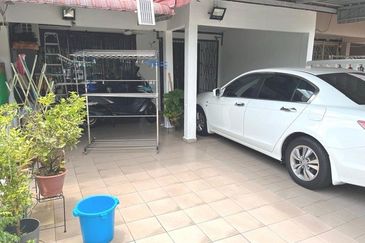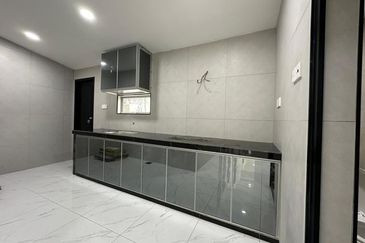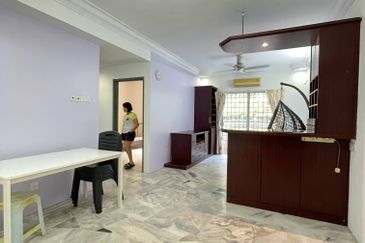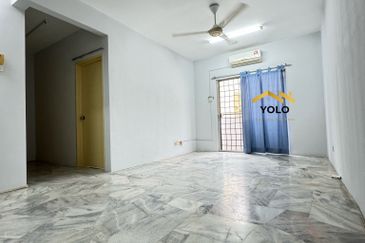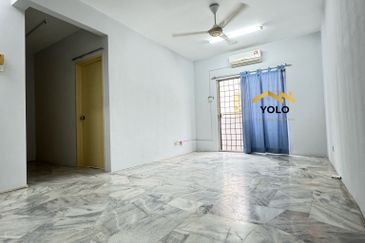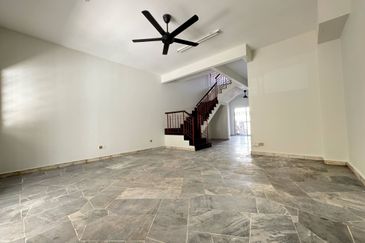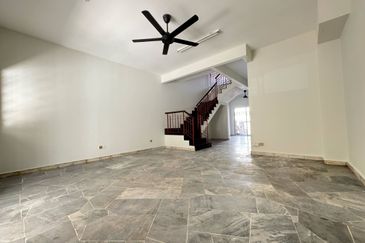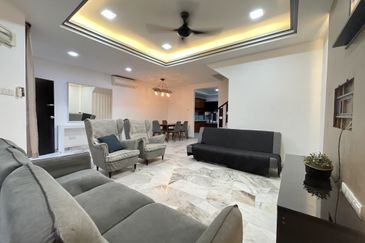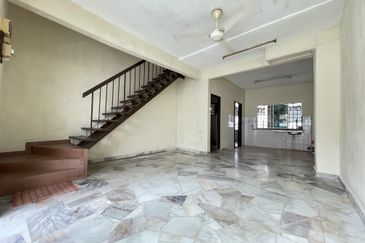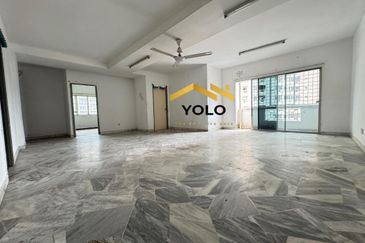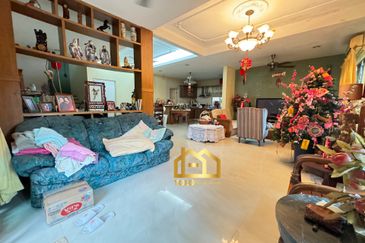
JOHOR Bahru, capital of the country’s southernmost state, has gone through a tremendous transformation and revitalisation over the past few years.
Prior to that, the heart of the old city had fallen into decline with the opening of the Customs, Immigration and Quarantine (CIQ) complex. According to architect Johan Ropi, this was because places such as the Lumba Kuda flats, Kampung Ungku Mohsin and Bukit Cagar recreation park were demolished to make way for the complex.
“This sucked all the population out of the city. Things got worse after the CIQ opened and everybody started bypassing the city itself. When the government offices at Bukit Timbalan were relocated to Kota Iskandar, it killed the original function of the town,” he explains.
Johor Bahru was established in the days when towns were built to cater for the needs of the local population rather than as a tourist attraction. Originally a small fishing village, it was turned into Johor’s administrative centre known as Iskandar Puteri by Temenggong Daeng Ibrahim in 1855. There, he built modern facilities such as police stations, courthouses and government departments. It was his son, Sultan Abu Bakar, who renamed the town Johor Bahru.
The sultan, the only Malay ruler to be given the title “Sir” by the British government, is known as the Father of Modern Johor. His friendship with Queen Victoria played an important role in shaping the state’s relationship with Britain. By the end of the 19th century, Johor was the only state in the peninsula to maintain its autonomy in internal affairs. At the time, the British were pushing for greater control of the Malay states by placing a Resident in them.
Sultan Abu Bakar was the first to introduce a state constitution among the states that one day would become Malaysia. The constitution was used to develop an efficient administration system. Many government departments were set up during this period, including the police force and treasury, land and survey, medical, postal and education departments.
“JB was never positioned for tourism, so when there was no more population in the town [because of the demolition of the flats], it was very difficult to sustain it. And with the emergence of hypermarkets in outlying areas, people from Singapore were bypassing the city completely,” says Johan.
Things had come to a pretty pass and very quickly, traders started moving out of the city. The Johor Bahru City Council intervened by coming up with a “pasar karat” or flea market, which ran every night to draw people back into town.
“It gave the city character, and the traders were doing good business and creating momentum and activity. From the pasar karat, they moved into the vacant lots in the JB city centre because at the time, in 2008, rents were very low,” says Johan.
That was the year he decided to return to the state. He had worked in Kuala Lumpur after graduating with an architectural degree from Universiti Teknologi Malaysia and then moved to Singapore, where he gained international experience doing projects in Dubai and Abu Dhabi. Armed with his knowledge and experience, he decided it was time to return home. “But at the time, JB was very dry. There was not so much activity,” he says.

Johan served on the city council for a year and was roped in to be one of the vice-presidents handling planning and compliance at the Iskandar Regional Development Authority (Irda). He then became a special officer to Tan Sri Shahrir Samad, a member of Irda’s advisory council.
He is also one of the founders of Kilang Bateri, an abandoned battery factory in Jalan Tampoi that was turned into a business centre, which Johan describes as hipster mall and the antithesis to Johor Premium Outlets, which sells foreign luxury goods at discounted prices.
However, it was Iskandar Malaysia — the southern economic development corridor in Johor — that was a major game-changer, injecting new life and investment into the city. The state attracted RM187.96 million in cumulative committed investments from 2006 to November 2015, according to Irda. Of this, 50% or RM93.39 billion represents investments that have been realised with projects on the ground.
When things started to pick up, there was a revitalisation of the old city centre, according to Johan. “Suddenly, the place-making activities by the city council started to kick in and many young people came in and opened hipster cafés and outlets. They represented the tourism and creative sectors — two of the nine sectors promoted under Iskandar Malaysia,” he says.
The other seven sectors are electrical and electronics, financial services, petrochemicals and oil and gas, logistics, healthcare, education and food and agro-processing. According to the Malaysia International Trade and Industry Report (published by the Ministry of International Trade and Industry), Johor has replaced Selangor as champion in terms of attracting foreign direct investment in the past two years.
With Iskandar Malaysia, Johor Bahru is now known as the “southern gate of Malaysia” — the city’s second major transformation in more than a century. It is looking to become a world-class city that will house international businesses and be home to professionals from around the globe, just like Kuala Lumpur and George Town.
The Iskandar Malaysia Comprehensive Development Plan spells out the way forward. Chapter 13 of the report, for instance, is a 22-page proposal to build a central business district (CBD) that will put Johor Bahru on the world map.
“Johor Bahru lacks the focal point that most world-class cities have,” says the report. “This undefined core area is one of the key elements that is currently missing in the city centre. This focal point would help to further re-emphasise its importance as a major business centre. By creating an urban core in the city centre, it could further enhance real estate values in the vicinity to create opportunities for a new development area that is lacking in the city centre.”

The proposed district will cover 392.4 acres and have three main precincts with different functions. The first precinct will be the Johor Bahru city waterfront, which will have components such as recreation, retail, entertainment and festivals.
The other two precincts will be the heritage and business and central park precincts. The former will function as an area for arts and culture while the latter will be a financial and business hub, with corporate offices and integrated developments.
Ang Boon Heng, member of the Johor Bahru City Council, says the CBD is a long-term plan that could take 10 years to complete. It is still in the first phase of construction. The Ibrahim International Business District, which is part of the first phase of the plan, was recently completed and launched on Nov 22 last year in conjunction with Sultan Ibrahim’s 57th birthday, he adds.
Spanning 250 acres, the first project of the district will be Coronation Square, which will comprise a mall, two blocks of high-rise serviced apartments, an office block, and a hotel with residences and medical suites, says Ang. According to a news report, the cost of the district is estimated at RM20 billion to RM25 billion.
“Step by step, people will see a better linkage between malls and commercial buildings in the later phases of the development. For instance, City Square, Komtar and Persada (Johor International Convention Centre) will be linked,” Ang says, adding that the waterfront will be developed later.
Preserving history and culture
The rich history of Johor Bahru is another thing the Iskandar Malaysia Comprehensive Development Plan is looking to leverage. It notes that the “preservation and conservation of these [historical] buildings are an integral part of the city’s growth as it is a vital link to past development”.
Take a stroll in the city and you will see historical buildings all over the place — for instance, the Sultan Ibrahim Building in Bukit Timbalan. Built in the Renaissance style with an overlay of Anglo-Malay influences, it is the former State Secretariat building, which was completed by the British in 1940.
There is also the Sultan Abu Bakar State Mosque in Jalan Skudai and the Grand Palace, known as Istana Besar, which houses the museum where priceless treasures of the Royal Collection are showcased.
Besides grand buildings and architecture, various streets and alleys have recorded the other side of the city’s history. Shophouses in Jalan Trus and Jalan Wong Ah Fook were where merchants from the Middle East, India and China came to trade in spices and tobacco over 100 years ago. A total of 246 shophouses built in the 1920s can be found here.

However, the report notes that it is not enough to just preserve these buildings. “There is a need to retain the history, architectural style and ambiance of the entire area to bring back the city’s livelihood. This area needs to encourage intense street level activity for the public.”
Johan agrees. “In the early days of Iskandar Malaysia, developers focused on greenfield areas such as Bukit Indah and Taman Molek. So, the greenfield areas came up and property prices there started to rise.
“But the brownfield areas were left unoccupied. As a local, I am constantly talking about reactivating the brownfield areas, which are the original footprint of JB. That is where the soul of the city is as it is very much dependent on the soul of the locals.”
Tan Chai Puan, a notable figure in Johor Bahru, is intent on preserving the city’s cultural heritage. He is working hand in hand with Irda to preserve the buildings and forge a cultural identity in Jalan Tan Hiok Nee — a street named after one of the Chinese Kangchus.
By tracing the history of Johor Bahru and the good business relationship forged between the early Chinese immigrants and the sultan, Tan has made a lot of effort to turn the simple street located near the Johor Bahru City Council into a heritage walk.
He also talks about the effects of moving the old customs complex to the CIQ. “All of a sudden, the old downtown turned quiet. In a short time, the old downtown of JB was almost a ghost town,” he recalls.
“Chinese business owners who were doing business in Jalan Tan Hiok Nee, Jalan Trus and Jalan Ungku Puan for many years had started to sell or rent out their shops. These streets, which bear the history of the earlier Chinese generations, were slowly losing their identity.”
Tan, who is executive director of the Southern University College, explains that in the time of Temenggong Daeng Ibrahim, Johor Baru thrived because of the gambir and pepper trade under the Chinese Kangchu system, where Chinese immigrants would appoint a leader and cultivate the plants.
“It was this group of people who settled in the old downtown area. They were leaving the place. I decided to start the heritage walk because I realised that if I didn’t do something, the memory of the Chinese contribution to this city would slowly fade away,” he says.
The opportunity came in October 2009, when the Johor Bahru Chinese Heritage Museum (located in Jalan Tan Hiok Nee) was set to be launched. Tan talked to then Johor menteri besar Datuk Abdul Ghani Othman and invited him to launch the museum and also announce the beginning of the heritage walk.
When he explained his idea to Ghani, the latter agreed without hesitation. “He promised to do it immediately. He said he walked from his official residence to his office every morning and passed the houses of worship of seven different religions along the way. To him, the old downtown of JB was a place of harmony,” says Tan.
Later, Ghani approved the construction of the arches located at the beginning and end of the heritage walk. The arch doors bear an icon representing the gambir and pepper plant. It can also be found on the walls of the Grand Palace and Johor Bahru City Council.
“The icon of the gambir and pepper represents how the people of each race shared the hardship at the time. It reminds us of the early days when everyone worked hard to raise their families and build the city,” says Tan.
He has planned various performances to be held every Saturday in front of the museum. He has invited a Chinese artist, business owners and entrepreneurs to set up an art gallery, traditional coffee shops, cafés and restaurants in the street. Tourists have started flooding the streets, bringing the town to life.
City council to be more efficient
 While there are many signs showing that Johor Bahru is on track to becoming an international city, SME Association of South Johor president James Tan (pictured, right) says there is still a need for the city council to improve the efficiency of its services.
While there are many signs showing that Johor Bahru is on track to becoming an international city, SME Association of South Johor president James Tan (pictured, right) says there is still a need for the city council to improve the efficiency of its services.
“The people on the city council should change their mindset. If we aspire to become an international city, their services should be of international standards. They should not continue the old way of doing things, which may be inefficient,” he says.
For instance, the handling of business licences. James says there have been many cases where business owners are not told about the progress of their application. When they are called after waiting three to six months, they are told their applications have been rejected due to some minor issue that could have been rectified easily had they been informed about it.
He adds that the city council should not just service Johoreans. With the launch of the Asean Economic Community, it should look at servicing a population of 600 million people.
“Following the further market liberalisation between countries, other cities in our neighbouring countries could surpass us if the people of JB and Malaysia continue to stay where they are without improving themselves. In JB itself, we have seen investment and capital pouring in. We have the hardware prepared, but now we need to improve the software,” he says.
Tan says Johor Bahru is probably experiencing the fastest development a city has ever had in Malaysia. This makes it even more important for the city council to preserve the culture heritage and community features.
“If the old things are flushed away by the new development, the city will lose its roots and identity, making it no different from many of the other cities in the world. That is why the faster the development, the more important the preservation of the city’s history and culture,” he adds.
Johan says sport is just as important as arts and culture to unite the people and bring out the true spirit of Johor. “The JDT team (Johor Darul Takzim football club) creates very much soul. Sport is like the arts — it is colour blind and no one is barred because of race, religion or skin colour. It increases self-esteem and a love of the state.”
Basically, he says, Johor Bahru has so much going for it. “KL may be the centre of gravity and people look at us and say we shouldn’t be important because we are not close to KL, but we are very close to Singapore. Look at it this way — when you think of potential purchasing power in KL, you are looking at a population of about six million, whereas JB only has 1.6 million people. But don’t forget we have five million Singaporeans across the Causeway with purchasing power that is triple that of Malaysians. If you look at it that way, the opportunity here is greater than in KL.”
This article first appeared in the Special Report Rejuvenating Cities Together, of The Edge Malaysia Weekly, on March 28, 2016. Subscribe here for your personal copy.
TOP PICKS BY EDGEPROP
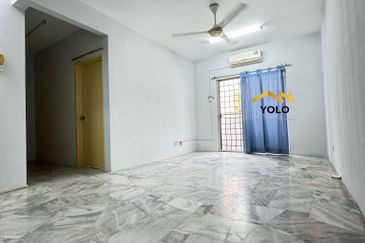
Pusat Bandar Puchong
Bandar Puteri Puchong, Selangor
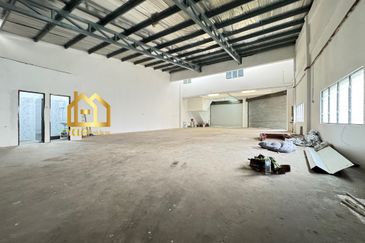
Subang Hi-tech Industrial Park
Subang Jaya, Selangor
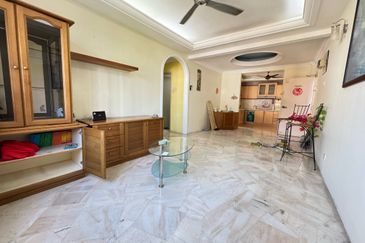
Sri Pinang, Bandar Puteri Puchong
Puchong, Selangor

Taman Wawasan, Pusat Bandar Puchong
Puchong, Selangor
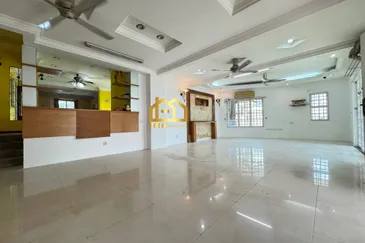
Taman Wawasan, Pusat Bandar Puchong
Puchong, Selangor
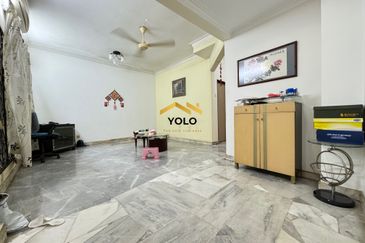
Taman Wawasan, Pusat Bandar Puchong
Puchong, Selangor

Taman Wawasan, Pusat Bandar Puchong
Puchong, Selangor
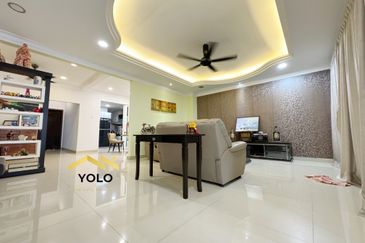
Taman Wawasan, Pusat Bandar Puchong
Puchong, Selangor


